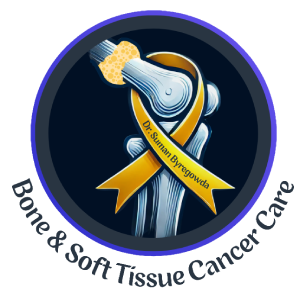

You should consult an orthopedic oncologist for Aneurysmal Bone Cyst (ABC) because these specialists are experts in diagnosing and treating bone tumors. ABCs, though benign (non-cancerous), can grow aggressively and cause damage to surrounding bone structures. An orthopedic oncologist can help accurately diagnose ABC and provide the most appropriate treatment, including surgery or other therapies.
An Aneurysmal Bone Cyst (ABC) is a benign (non-cancerous) bone tumor that typically contains blood-filled spaces or cysts. These cysts can cause the bone to weaken, leading to pain, swelling, and sometimes fractures. The condition can occur in any bone but is more commonly seen in long bones like the femur or tibia and in the spine.
Aneurysmal Bone Cyst (ABC) most commonly affects children and young adults between the ages of 10 and 20 years. However, it can occur at any age.
The most commonly affected bones by Aneurysmal Bone Cyst (ABC) are:
The exact cause of Aneurysmal Bone Cyst (ABC) is not fully understood, but it is believed to be related to abnormal blood vessel growth in the bone.
To diagnose Aneurysmal Bone Cyst (ABC), doctors typically use:
Yes, a needle biopsy may be needed to confirm the diagnosis of Aneurysmal Bone Cyst (ABC). The biopsy allows the doctor to take a small tissue sample from the tumor to examine it under a microscope. This helps distinguish ABC from other conditions that can cause similar symptoms, such as Giant Cell Tumor (GCT).
The primary treatment for Aneurysmal Bone Cyst (ABC) is usually surgical removal of the
cyst. Treatment options include:
Sclerotherapy is a percutaneous procedure where a sclerosing agent (a chemical substance) is injected into the cyst to shrink or close off the blood vessels inside it. The sclerosing agent causes the cyst’s blood vessels to collapse and harden, which stops the cyst from growing. This can be an alternative to surgery, especially in cases where surgery might be too risky or complicated.